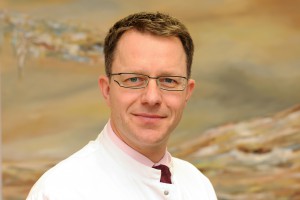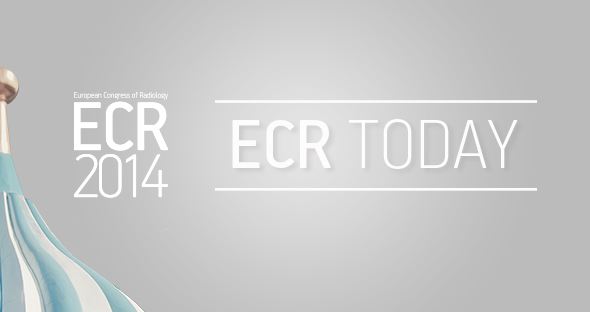
For this month’s ESR News interview we spoke to Prof. Hans-Ulrich Kauczor, from Heidelberg, Germany, who serves on the ESR Executive Council as chair of the ESR Research Committee. He gave us an insight into the workings and recent achievements of his committee, as well as his own background within the ESR.
ESR Office: What is the main purpose of the ESR Research Committee (RC) and how does it work in practice?
Hans-Ulrich Kauczor: The main purpose of the RC is strategic. The RC provides strategic recommendations to the ESR Executive Council. To do this properly, the RC surveys and supports the need of researchers in radiology. Also, the RC leverages the research-focused collaboration with other disciplines and their respective European societies.
One recent major achievement in this regard was the collaboration with the European Respiratory Society (ERS), where we agreed on joint recommendations on lung cancer screening in Europe, which we published in May 2015 simultaneously in European Radiology and the European Respiratory Journal.
Other major collaborations are in the field of imaging biomarkers together with the European Organisation for Research and Treatment of Cancer (EORTC) and the RSNA’s Quantitative Imaging Biomarkers Alliance (QIBA), as well as imaging biobanks with the Biobanking and BioMolecular Resources Research Infrastructure (BBMRI-ERIC).

Prof. Hans-Ulrich Kauczor, chair of the ESR Research Committee
ESR: Can you explain the role of the Research Committee’s subcommittees and the recent structural changes that have taken place?
HUK: Just over two years ago, three additional working groups were established under the umbrella of the RC. Working groups exist temporarily to accomplish a certain goal for the ESR. The main goal of each of these working groups was to write and publish an opinion or white paper in their field. The outcomes in each of these fields were as follows:
Read more…

An interview with Prof. Hans-Ulrich Kauczor, Heidelberg/DE, ESR Research Committee Chair
ECR Today: What are the Research Committee’s objectives?
Hans-Ulrich Kauczor: Our main tasks are to periodically survey the needs of the research community, as well as develop recommendations for radiologists to engage with different fields of research and innovation. We also work to assess the current status and develop recommendations on how to improve education in research and to provide strategic recommendations for the research field to the executive council. Last but not least, we aim to leverage cooperation between research disciplines and foster networking and liaising with scientific biomedical European societies.

Hans-Ulrich Kauczor is professor and chairman of radiology at the University of Heidelberg and director of diagnostic and interventional radiology at University Hospital Heidelberg in Germany. He chairs the ESR’s Research Committee.
ECRT: Why is it important to have a dedicated ESR subcommittee for imaging biomarkers?
HUK: The Subcommittee on Imaging Biomarkers was established to address the issues concerning the future development of image-derived quantitative biomarkers, its assessment, validation and standardisation.
The development of imaging biomarkers has become an integral part of modern medicine with a huge potential to advance the development of personalised medicine. Different types of imaging biomarkers (anatomical, functional, and molecular) are used for the detection and treatment of major diseases including cancer, cardiovascular diseases, neurological and psychiatric diseases, musculoskeletal disorders, metabolic diseases, as well as inflammatory and autoimmunity based diseases. In contrast to other biomarkers, imaging biomarkers have the advantage of remaining non-invasive. They are also spatially and temporally resolved, non-destructive and repeatable over a long period, and have the potential for broad application. But before imaging biomarkers can be widely adopted, measures for standardisation and quality assurance must be implemented.
Read more…

As every year, the ESR presidency changed hands at the European Congress of Radiology in March, with the new president, Prof. Guy Frija, from Paris, taking the reins from Prof. Gabriel P. Krestin. At the same time, the ECR 2014 Congress President, Prof. Valentin E. Sinitsyn, from Moscow, took over from Prof. José I. Bilbao as chairman of the Congress Committee.
In addition to these regular changes, a number of other positions on the Executive Council have been filled by new faces. First, Prof. Bernd Hamm, from Berlin, has moved up the chain into Prof. Sinitsyn’s position as 1st Vice-Chairperson of the Congress Committee, with Prof. Katrine Åhlström Riklund, from Umea, Sweden, elected to the role of 2nd Vice-Chairperson.
Read more…




